
One of the major benefits that additive manufacturing has over traditional manufacturing is its ability to be customized for individual use, no matter how big or small the part may be. Never is this more evident than with microscale 3D printing. Microscale 3D printing allows for the creation of customized miniature structures of micrometer scales and smaller. It is useful for a variety of products including in electronic and medical devices, and even for use in the aerospace sector, as it allows users to create parts that might be too costly or even impossible to create through traditional manufacturing. One company that has been a leader in micro-level 3D printing is Nanofabrica. We sat down with Avi Cohen to discuss their mico-level resolution technology and the benefits and applications of microscale 3D printing in a variety of industries.
3DN: Could you introduce yourself and your connection to additive manufacturing?
My name is Avi Cohen, and I recently started working with Nanofabrica as the EVP Global Sales. My career started in sales, marketing, and high-level management positions in various bio-medical companies, and I have over 20-years of experience in the additive manufacturing sector, beginning in 1999 when I joined Stratasys (formally Objet). Working at the forefront of the digital manufacturing revolution, I have an intimate knowledge of — and association with — the international 3D printing community.
3DN: What about Nanofabrica? How was it started? What is its mission?
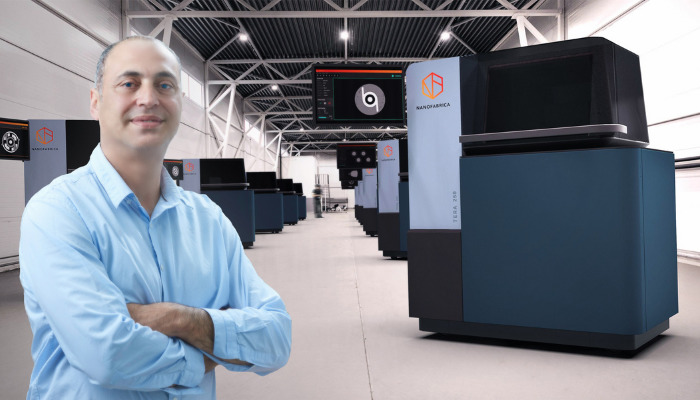
Avi Cohen with Nanofabrica’s TERA 250 (photo credits: Nanofabrica)
Nanofabrica was formed in 2016, and from the start its mission was to develop an additive manufacturing process that was devised for micro-manufacturing, more precisely for manufacturers looking to manufacture micro parts with micron features and tolerances, or larger parts areas of which needed to attain extremely tight micron tolerances and fine detail.
The company recognized two trends that were at play. There was the huge and growing interest in the use of AM for production applications — driven by cost and time to market considerations, the ability to produce parts of previously impossible geometric complexity, the ability to produce smaller volume runs economically, and the ability to mass customize— and also the drive pan-industrially towards miniaturization of parts and components for a myriad of reasons, not least the manufacture of minimally invasive medical devices, light weighting in such industries as automotive and aerospace, and scaling down size for an increasing number of micro-electronic and wearable / smart applications.
3DN: Could you tell us more about the Tera 250 as well as your micro-level resolution technology? (Specs, printing speed, material, volume, etc)
The Tera 250 is based on an Digital Light Processor engine, but to achieve repeatable micron levels of resolution the Tera 250 combines innovative Micro DLP with the use of smart adaptive optics. This tool — in conjunction with an array of sensors — allows for a closed feedback loop. This is the core element that enables the Tera 250 to reach very high accuracy while remaining cost-effective as a manufacturing solution. This is the first time that adaptive smart optics have been applied to an AM technology. It succeeds in manufacturing parts at a speed and a cost per part that makes it commercially viable. While also allowing for large-scale manufacturing of tens of thousands of parts. This is thanks to breakthroughs in hardware, software, and materials.
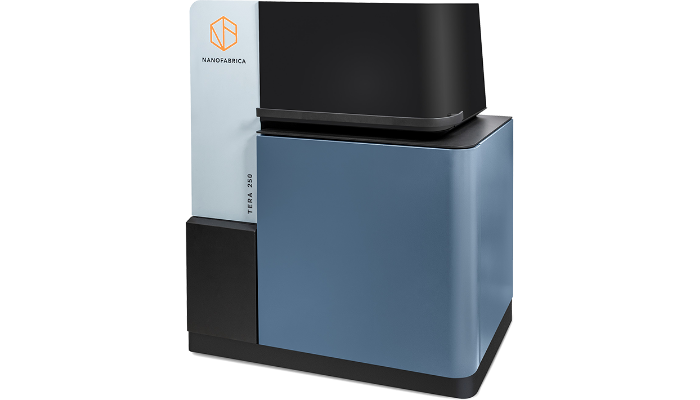
The TERA 250 (photo credits: Nanofabrica)
The most unique aspect of the technology, however, is indeed the reason for its name. Nanofabrica’s AM system has 250 tera voxels in the build volume of the printer, hence the Tera 250. 250 tera voxels basically means 250 trillion (250 times ten to the power of twelve) voxels in the build area of the printer. There is no other machine with such a voxel capacity, and because of this the Tera 250 has the ability to apply so much data onto one part, which means highly precise and micron level accuracy can be achieved. Additionally, our voxel capacity means that we can fit a large number of end-use parts in one build volume.
3DN: What are the challenges of using a microscale 3D printing process? Its benefits?
One challenge is that customers are rightly demanding more these days. Companies need to know that their move to the use of AM as an alternative or complimentary technology from conventional manufacturing processes will benefit them.
As to benefits, well they are numerous and fundamental to the drive towards innovative, cost-effective, and timely production of micro parts and components. Perhaps of key interest is the fact that AM is agnostic to part complexity, and it is possible to design and manufacture unique geometries. As such, the Tera 250 system becomes an enabling technology, and a true stimulator of innovation, making the manufacture of parts and features previously impossible, possible.
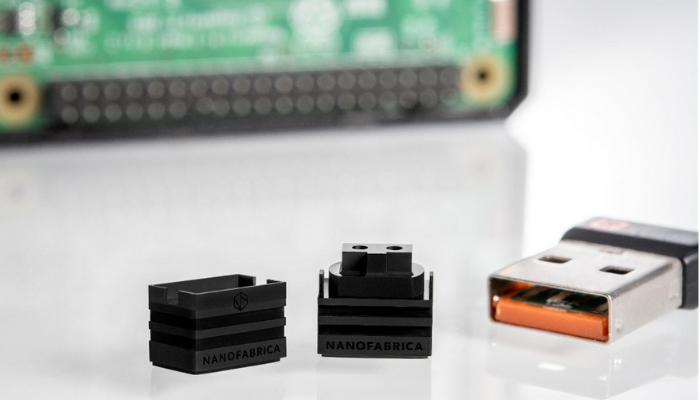
Nanofabrica is known for its micro-resolution technology (photo credits: Nanofabrica)
AM also requires no set up costs. The tooling required for traditional manufacturing processes not only has a negative impact on time to market, but also makes such processes uneconomic for small or medium sized production runs. For AM technologies, small and medium sized runs are cost-effective, maybe even could be considered the sweet spot for the technology.
Add into the mix that AM allows for mass customization, personalization, and the ability to use the same manufacturing platform for prototyping, small batches, and mass manufacturing, and you begin to see the myriad of possibilities that now exist for micro manufacturers.
3DN: One of the benefits of micro-level resolution technology is that it enables makers to create parts that aren’t possible with traditional manufacturing, especially in the medical sector. Do you have examples of parts that really can only be made using this process? How should we be thinking of parts that might only be possible through additive manufacturing?
We have countless examples of products that are either impossible or uneconomic to produce via conventional manufacturing processes but which we can make on the Tera 250. For example, take a look at this micro-sized connector. Used in precise electronic applications, this is a challenging component characterized by its overall extremely small size, complex internal geometry and features (very difficult to achieve via traditional molding technologies), and exacting fit and form requirements. The highly complex internal characteristics of the connector would require extremely expensive and time-consuming steel tooling. As tooling is not required using additive manufacturing, the parts are produced cost effectively and in a timely fashion.
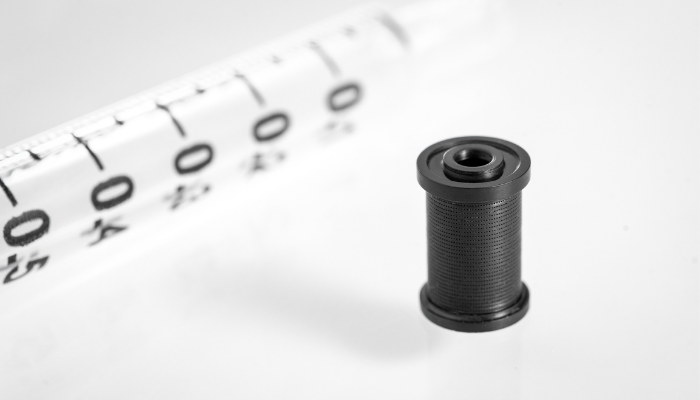
Microscale 3D printing can be used to print parts that might be too costly or even impossible to make using traditional manufacturing (photo credits: Nanofabrica)
3DN: What are the most relevant applications of using micro-level resolution technology? Where do you see it going in the future?
Really the sky’s the limit, and opportunities are only really restricted by the imagination. However, there are some obvious areas that micro-level resolution technology like ours can obviously make a huge impact and disrupt traditional manufacturing processes. We have identified a series of killer applications where there is burgeoning market demand, where the only route to market at the moment is through disproportionately expensive or restrictive traditional manufacturing technologies, and where the use of AM can open up significant advances in terms of design and functionality. For example, in the area of medical devices, semi-conductors industry (tools, jigs, holders), micro-electronics, MEMS, microfluidics, and life science among others. Microfluidics are a good example of how a true micro-AM technology can outcompete traditional manufacturing processes. Microfluidic channels are used to move incredibly small volumes of liquid, and many of them incorporate functioning components such as filters and pumps. Traditional micro manufacturing processes such as micro molding hugely limit the freedom of design for such microfluidic channels, and it is almost impossible to manufacture functional substructures in them using such processes.
3DN: Any last words for our readers?
These are exciting times for the industry, and exciting times for Nanofabrica. Most of industry is now analyzing ways in which it can incorporate additive manufacturing as a process that optimizes manufacturing, and many more are looking at ways to miniaturize parts and components. Nanofabrica exists at the confluence of these two trends, and as such we are riding two waves.
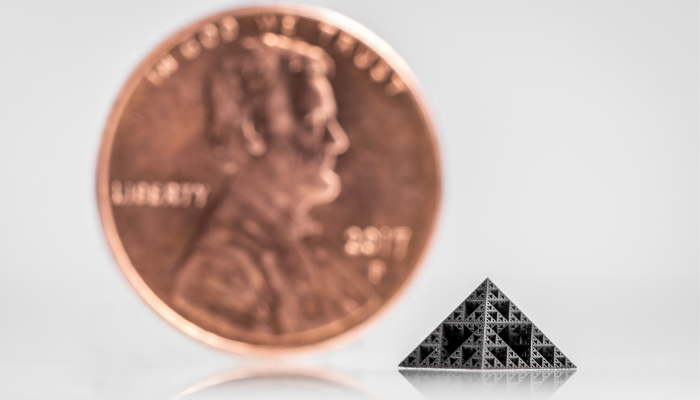
Nanofabrica can print complex pieces that are smaller than a penny (photo credits: Nanofabrica)
As I said earlier, the only restriction on the opportunities that exist is our imagination. It is with this in mind that we work pragmatically with customers and partner with them to assess how the Tera 250 may be able to assist their manufacturing endeavours. So we encourage a conversation, and together we may be able to stimulate the manufacture of innovative and profitable solutions across industry. You can find out more about Nanofabrica HERE.
*Thumbnail photo credits: Nanofabrica


